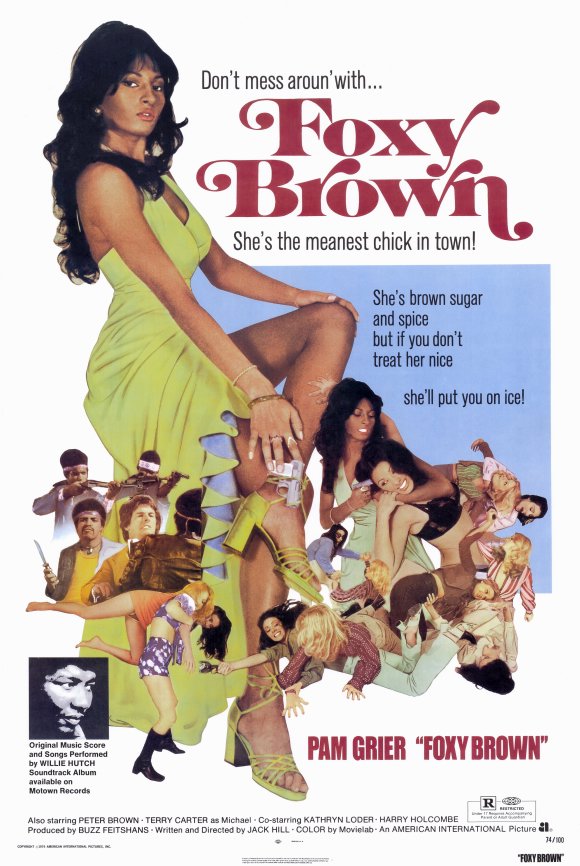
I will go out on a limb and suggest that there isn’t a more universally beloved figure to all of us here on Daily Grindhouse than the legendary Pam Grier. I mean, who else comes close? Lee Marvin, sure. Clint Eastwood, possibly. George Romero and John Carpenter, probably. But none of them are as pretty. And none are quite so important to history. This site is all about the love of movies, particularly genre movies, and who could we possibly love more than the first (and best) female action hero?
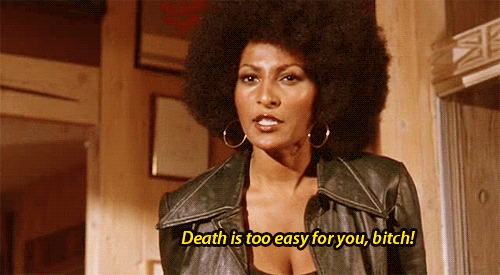
Pam Grier is fierce. Pam Grier is smart. Pam Grier is RIGHT. She’s sexy, funny, direct, feminine, and ferocious. She has a boldness, an assertiveness, an unabashed voluptuousness, that remains unique and still refreshing in American lead actresses. Pam Grier is history in motion. She’s all the best things about America, and she stands against the worst of them. What she brought to movies is something rare and combustible, and apparently intangible.
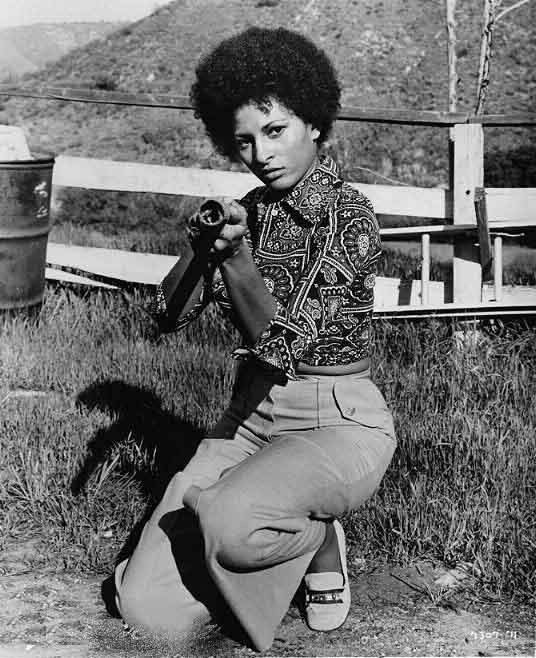
After standing out in a string of eye-catching supporting roles and cameos in the earliest years of the 1970s, COFFY (1973), written directed by Jack Hill (THE BIG BIRD CAGE), was the first movie to finally put Pam front and center as the solo lead. Coffy is a nurse out to introduce heartless drug dealers to pain. This is not only an incredibly entertaining film, but also one that is interesting for how it puts sex and violence so close together — most American films keep the two very much separate. Of course COFFY has its dated elements, and Lord knows no one could make a movie remotely like it today, but there is a rocky morality to the movie that makes it very compelling still.
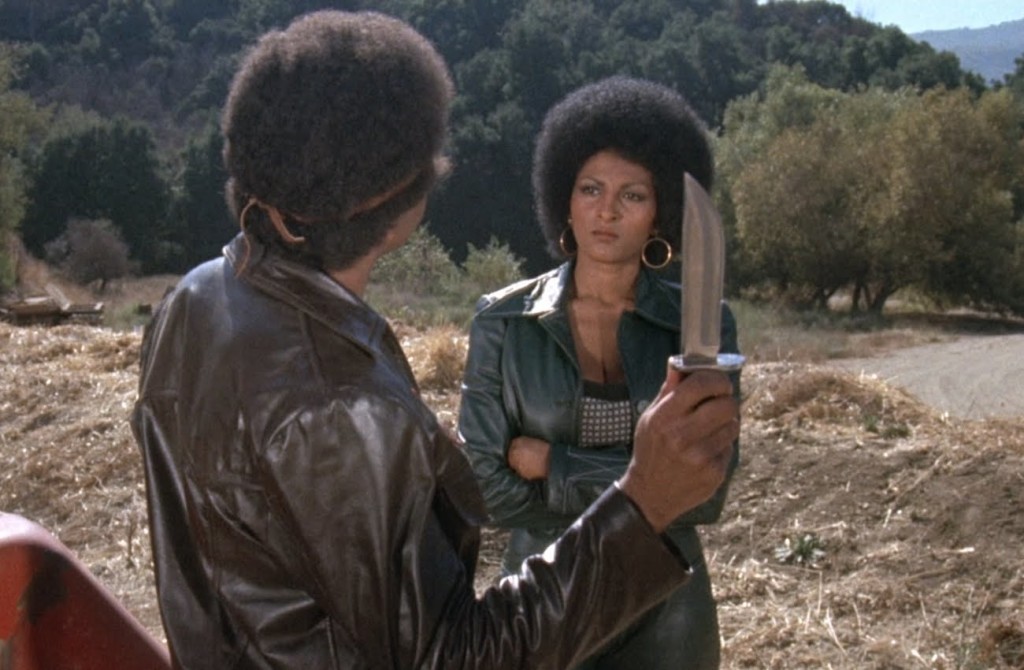
FOXY BROWN (1974) is Pam’s follow-up to the success of COFFY, again with Jack Hill writing and directing. Pam plays an avenging angel in a ridiculously lurid series of events, with the level of violence arguably even higher this time around. Jack Hill was a truly talented and fearless exploitation & action director, really one of the few filmmakers Pam worked with who was able to mount star vehicles worthy of her individual talents.
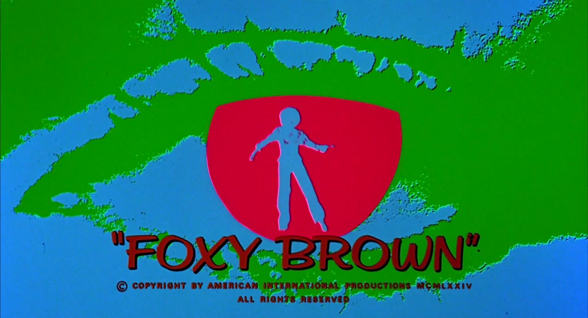
The opening title sequence finds Pam modeling a variety of outfits and hairstyles, dancing alone — and with herself, doubled and tripled– to Willie Hutch’s original R&B score. (Willie Hutch was a journeyman Motown songwriter and performer who really deserves to be more widely remembered — his music for this movie is up there with SHAFT and SUPERFLY as one of the finest original soundtrack albums of the era. He also made the music for THE MACK.) Pam is playing the lead role of Foxy Brown, but she’s not really in character here. The woman dancing and smiling in this sequence isn’t the more severe and fearsome woman we come to know throughout the rest of the movie. Foxy Brown isn’t Pam Grier, or maybe in some ways she is. Regardless, a tone is being set for the audience. This is a star vehicle, and Pam Grier as Foxy Brown is the star. The opening title sequence of FOXY BROWN stylistically resembles those associated with the James Bond series, right down to the hero firing a pistol right into the camera — only in this case, the Bond girl is the hero of the film, not the eye candy.
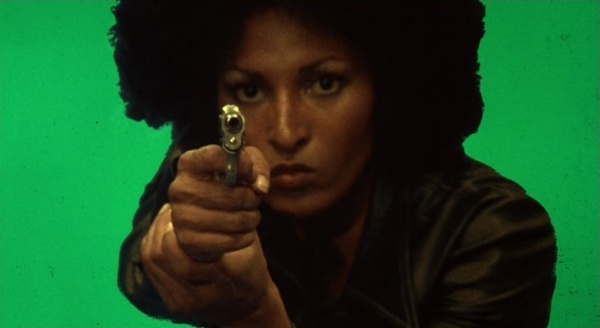
Gender convention is upended again soon after that. Foxy’s weaselly brother Link (Antonio Fargas, who specialized in this kind of character) calls Foxy in the middle of the night, begging for her help. He’s a hustler who owes money to some bad people who are coming to collect. He needs Foxy to run them off, which she does. Right off the bat, this is a different sort of American action movie. The man calls the woman to come save his neck. She’s no damsel in distress. She’s the damsel you call when you’re in distress.
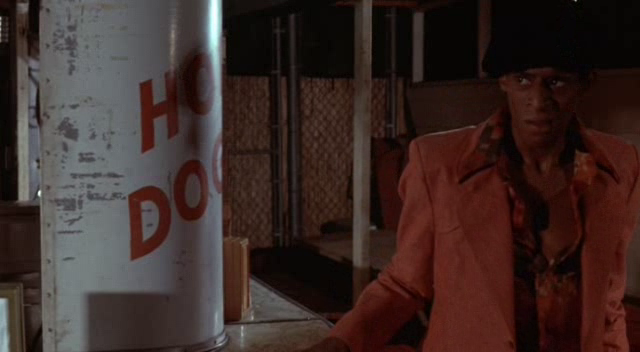
Foxy turns on the lights, stands up, drops her nightgown, and walks to camera, the details of her body being briefly glimpsed in full and then quickly lost to shadow as she leaves the screen. When she returns, she’s wearing a bra, into which she then tucks a small revolver. It’s a striking introduction. Depending on one’s preferences, it could be described as mind-blowing. It’s also significant and worth considering. To some degree, this moment is exploitation — if we are the sort of viewer who admires and craves Pam Grier’s body, this is showing us exactly what we want to see. But the casual presentation of the heroine’s nudity, and the abruptness of it, make a statement. Remember this was a time long before VHS — nobody could freeze-frame such a moment. So imagine what this does to an audience. It’s daring, gratifying, depriving, confident, a movie star declaring pride in her body and awareness of her fans’ interest in it, but then it’s also about promptly moving on from that curiousness or desire. There’s an aspect of denial. There’s power at play.
Who created this window of opportunity (for lack of a better term)? Who owns this moment? Not the audience. Not even Jack Hill. No — Pam Grier as Foxy Brown owns this moment. In COFFY, when Pam Grier drops her gown, there’s a sense that Jack Hill as director is leading up to it as a spectacle. By the time the topless moment arrives in FOXY BROWN, so noticeably early, it’s less dramatic. We get that out of the way, because there’s a story to tell. The sexuality is always present — Pam Grier’s body, and male interest in it, is in fact a very active part of the plot — but Pam Grier is the key player in charge of this movie’s sexuality.
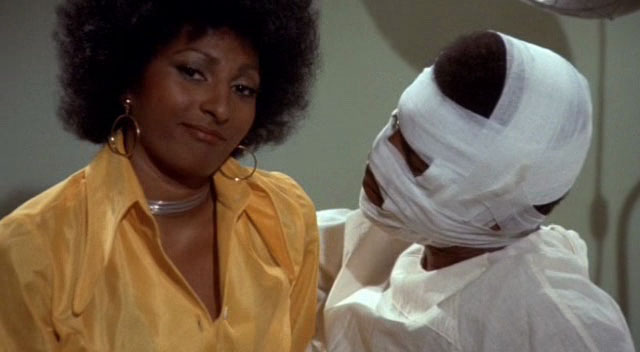
Not only do accounts of the making of FOXY BROWN support that presumption, but so too do the following scenes. Foxy gets Link out of his jam, in the film’s first action scene, showing she’s as physically capable here as any other action hero, and then goes to see her boyfriend, an undercover agent, in the hospital. As Willie Hutch croons in the background, Foxy gets amorous with him before he’s even awake. He’s the sex object, not her. They talk frankly about intimate things and then pull the curtain, only to be interrupted by a nurse in a moment of broad comic relief.

It’s intriguing to note that Foxy Brown is so much the prime mover here that we don’t even see her love interest’s face until a doctor comes in to bandage it. (He’s had some surgery done to obscure his identity from his undercover work.) His face — and his name — don’t even really matter. Terry Carter is very likable and handsome and has a nice rapport with Pam Grier in their scenes together, but next to her, he’s comparatively bland. The way James Bond movies treat the Bond girls is the way this Pam Grier movie treats the male love interest. You won’t remember much about him but you’ll like him just enough to care when he’s killed, motivating Foxy Brown to go after the bad guys who did it.
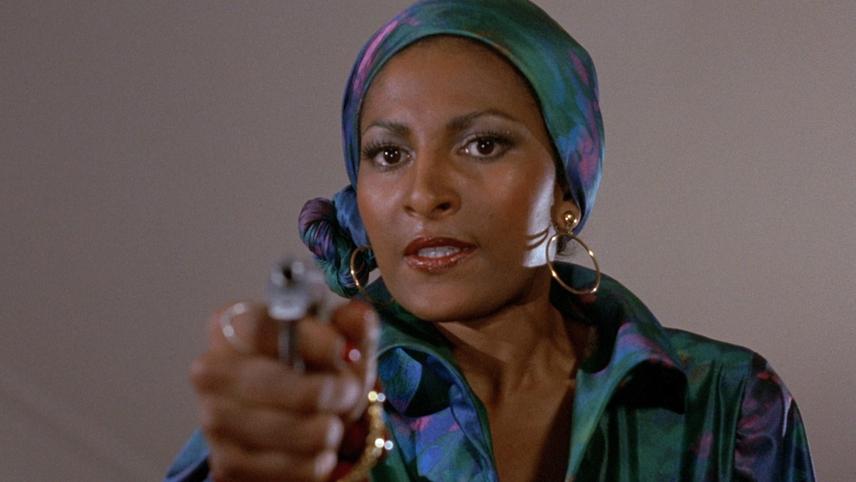
Link sells Foxy’s boyfriend out to the mob, and they have him murdered. Foxy figures out what Link did, and forces him to tell her who called the shots. Again, notice the inversion represented by Foxy sparing Link — story-wise, it’s because he’s her brother, but the way it pops on screen, it’s because it would be like she’s punching down too low. Foxy Brown reads as way more forceful than the lowlife Link ever does — with respect to Antonio Fargas and his particular charisma, it’s always clear who the star of this movie is. Pam Grier’s performance demands an adversary worthy of her, and he isn’t.
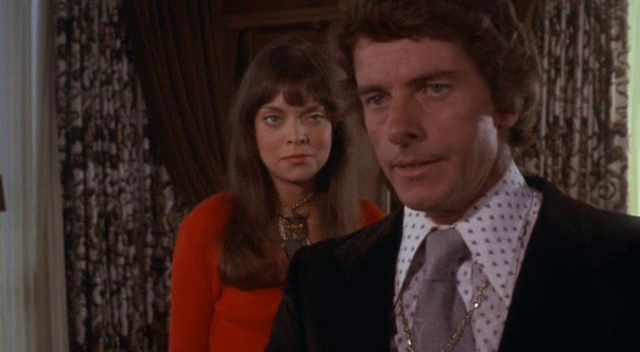
Katharine Wall (Kathryn Loder) and her henchman-slash-boytoy Steve (Peter Brown) are the main villains of the film. They run the empire of drugs and prostitution that Foxy’s boyfriend had been investigating. They ordered the hit. They’re the ones who need to pay. Posing as an aspiring call girl, Foxy goes to Miss Katherine to ask for a job, meaning to infiltrate her operation. Kathryn Loder wasn’t a huge star — this isn’t Batman versus Superman here — but she provides a nice counterbalance to Pam Grier, underplaying her evil madam role with a kind of stoned iciness. Since Pam is such a fiery and energetic presence, it’s an effective contrast. And Peter Brown in this movie provides what Paul Gleason did in so many movies in the 1980s, an all-purpose prick whose smile you’re ready to see knocked off his face almost as soon as he arrives on screen.
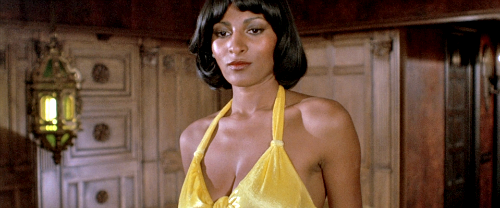
This is an important and valuable aspect of the sociopolitical resonance of Pam Grier’s action movies. The movies made by male action stars like Clint Eastwood or Charles Bronson in the 1970s reached their endpoint when revenge was achieved. FOXY BROWN is a revenge movie, but revenge alone wouldn’t be satisfactory. Victory for Foxy Brown comes with emasculation.
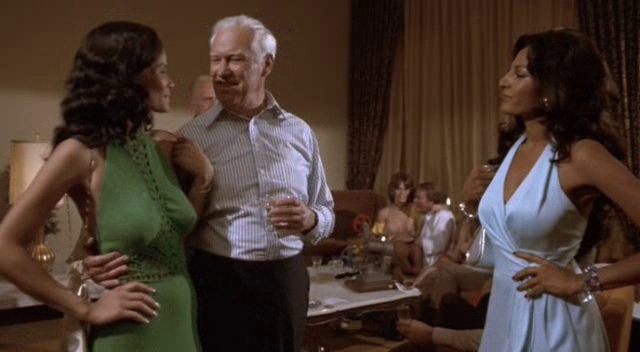
One of the movie’s most memorable setpieces happens when Foxy is sent on her first call for Miss Katherine, and with the help of a troubled hooker, she absolutely humiliates the louche, corrupt, and vaguely racist city judge who had been expecting a much different outcome. The cultural significance of this scene is pretty much on the surface, but that doesn’t mean it isn’t significant. FOXY BROWN crams a fairly large and wide-ranging number of contemporary issues — racism, male-on-female violence, female-on-female violence, sex trafficking, drug addiction, child custody battles, slugfests at lesbian bars — into its middle act, maybe a couple more than the movie can handle. This isn’t the most polished film of its era, but then again, we don’t look to exploitation for polish. We look to it for combustion — movies like this one take on subjects that most respectable movies are too genteel to touch, and with an energy and explosiveness that mainstream movies never dare approach.
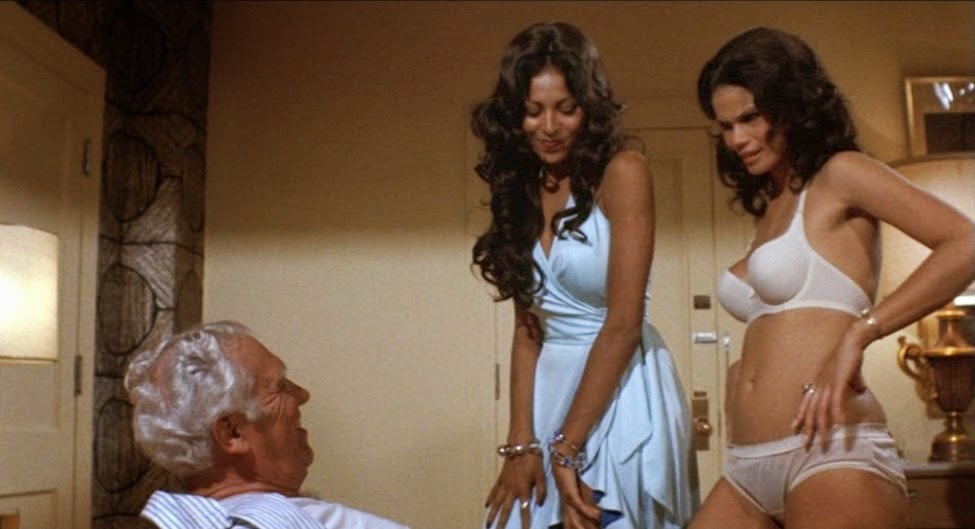
In the final half hour, FOXY BROWN gets pretty extreme, even by 1974 standards. When Miss Katherine’s people get their hands on Foxy Brown, they send her to a secluded cabin to be “broken.” Nobody in their right mind wants to see Pam Grier treated this way onscreen, but the horror of the cabin scene certainly emotionally justifies the carnage that follows. After being shot up with heroin and abused and violated by two of the filthiest-looking rednecks this side of a Sam Peckinpah movie, Foxy’s righteous fury becomes literally incendiary.
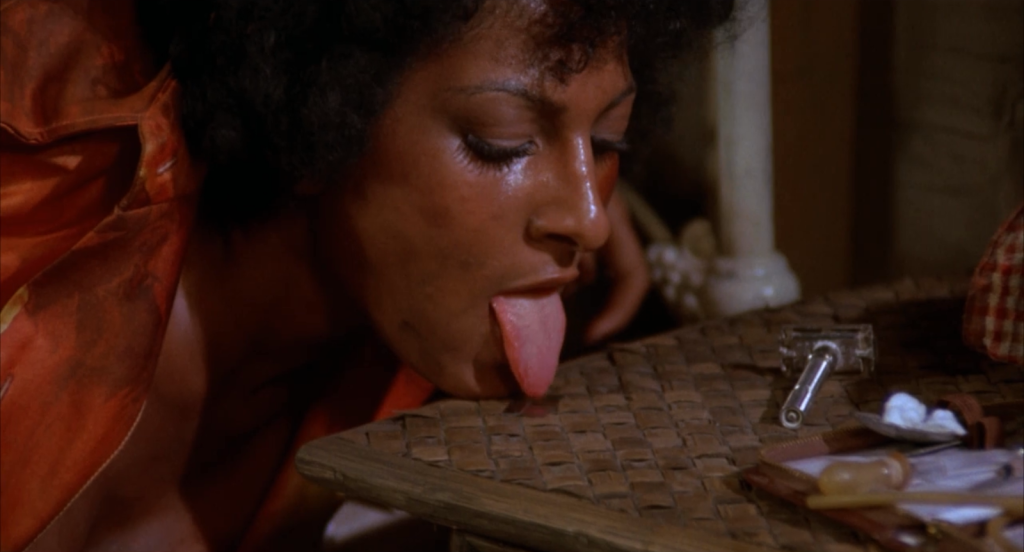
Foxy Brown leads a full-on revolution in order to annihilate her enemies, doing it not only because it’s what she wants, but because it’s right. As she says to an ally late in the film, “You just take care of the justice, and I’ll handle the revenge myself.” It’s endemic of the genre that these kinds of political overtures were layered over the basic narratives of vengeance — John Shaft towards the end of 1971’s SHAFT also recruits a band of black militants to achieve his victory. The name “blaxploitation” is traditionally used as a catch-all for the genre, but it’s not a term that sits entirely comfortably. These films, at their best, reflect the passions and frustrations of the audience they were made to entertain. They may at times be wish fulfillment, and the vicarious thrills are plentiful, but if movies like FOXY BROWN were purely categorizable as exploitative, then it wouldn’t feel so damn good when its heroine wins out in the end.
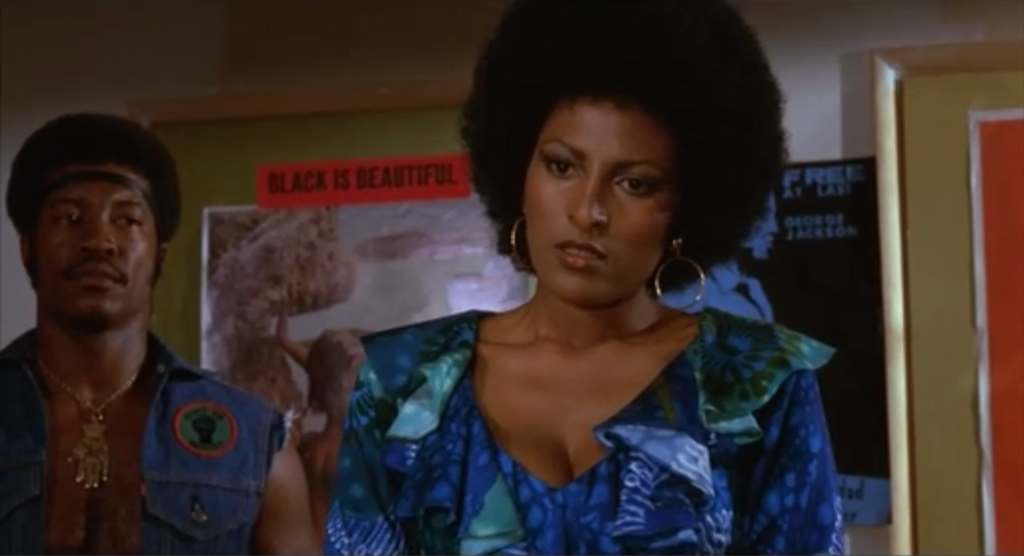
It can be argued that FOXY BROWN is the ultimate Pam Grier vehicle. It’s the last one she made in collaboration with Jack Hill, and while she had starring roles in three films in 1975 (two directed by Arthur Marks and one by William Girdler), by 1976’s DRUM she was back to co-starring or supporting roles. Some movie stars are so unique and so special that it seems to be hard for most filmmakers to figure out what to do with them. Part of what makes FOXY BROWN so unique and so special is that Pam Grier, as a movie star, had some degree of authorship in the film. How disappointing to realize that was just a temporary condition. It appears to be the case that the movies were only open to the idea of Pam Grier as a movie star for a very limited amount of time. That’s a major failure of movies — no other way to look at it. Look out the window. America still needs her. We still need Pam Grier, because there is no one else like her, and because there is no one else like her, we still need her. She really is one of the great movie stars of all time.
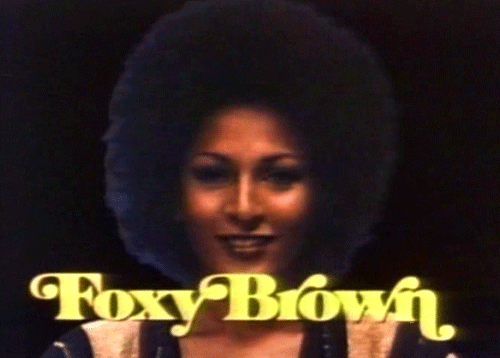
“The party’s over, Oscar. Let’s go.”
— JON ABRAMS.
FOXY BROWN plays tonight at Anthology Film Archives in New York City.
- [THE BIG QUESTION] WHAT’S YOUR FAVORITE FEMALE ENSEMBLE IN MOVIES? - July 22, 2016
- [IN THEATERS NOW] THE BOY (2016) - January 24, 2016
- Cult Movie Mania Releases Lucio Fulci Limited Edition VHS Sets - January 5, 2016
Tags: Action Film, Antonio Fargas, Jack Hill, New York, pam grier, Screenings, Sid Haig, Terry Carter, Willie Hutch






No Comments